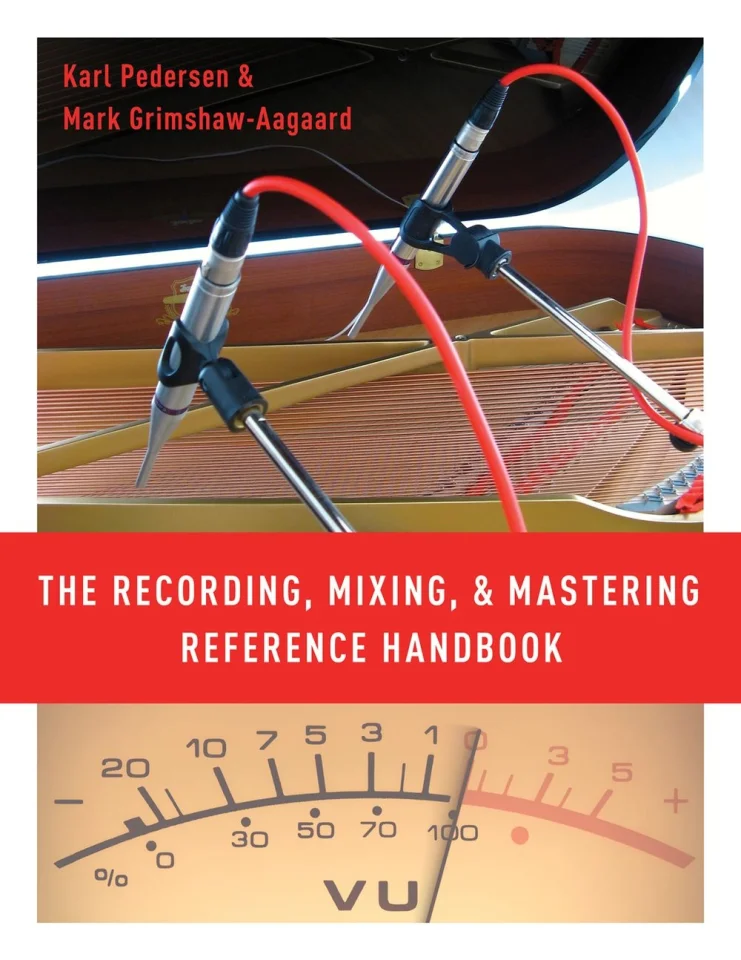Treść
- Introduction
- PART I The Instruments (practical recording and mix-techniques)
- Chapter 1 The Voice
- Acoustics and microphone settings · Vocal psychology · The Headphone Mix · Tips · Various vocal techniques · The mix settings and effects · Special uses of vocal microphones · Harmony vocals as overdub · Tips
- Chapter 2 The Drum Kit
- The Instrument and the acoustics · Mic setup · Mic technique: The individual drums in the kit · Advanced mic setups · Mix-settings and effects
- Chapter 3 The Bass Guitar
- The instrument · Mic or DI? · Or both? · Virtual amps · Mix-settings and effects · Tips
- Chapter 4 The Electric Guitar
- The instrument · Mic techniques · Ambience and acoustics · Layering guitars · Virtual stacks & re-amping · Mix-settings and effects · Tips
- Chapter 5 The Piano
- The Instrument and the acoustics · Always use condenser microphones · Recording acoustic pianos in the studio · Digital piano · Live recording · Mix-settings and effects
- Chapter 6 The Acoustic Guitar
- The Instrument · Mic setup · Mix-settings and effects
- Chapter 7 The Recording of Some Less Common String Instruments
- The mandolin · The dobro · The banjo · The harp
- Chapter 8 Percussion
- Congas and bongos · Cajon · Claves · Djembe and bodhran · Tambourine and shakers · Timbales · Xylophone, marimba, vibraphone, and glockenspiel
- Chapter 9 The Double Bass and the 'Cello
- The Instrument and the acoustics · Mic setup · Stereo setups · Mix-settings and effects · Tips
- Chapter 10 The Violin and the Viola
- The Instrument and the acoustics · Mix-settings and Effects · Tips
- Chapter 11 Brass and Wind Instruments
- Brass and saxophones · The horn section · The flute · Tips
- Chapter 12 Synthesizers and Electronic Keyboards
- The instrument · DI, mics, or MIDI · Mix-settings and effects · Tips
- Chapter 13 The Leslie Speaker
- The Instrument · Mic setup · Mix-settings and effects
- Chapter 14 Live in the Studio
- Isolation booths and screens · Ghost Notes · Tips
- Chapter 15 Recording Choirs and Small Acoustic Ensembles
- The acoustics · Mic placement · Spot mics · Tips · Choirs with accompaniment · Mix and editing
- PART II Microphone Techniques (principles/background theory)
- Chapter 16 Microphones: Types and Specifications
- The transducer types · Reading mic specifications · Comparing Mics
- Chapter 17 Microphones: Polar Pattern
- Cardioid · Omni · Figure-of-eight · Multi-pattern microphones · Shotgun microphones · Mic techniques · Omni v. cardioid: Choosing the right polar pattern · Recording with omnis
- Chapter 18 Stereo Recording
- Spaced omni - The Decca tree - Baffled stereo · Coincident stereo · MS Stereo · More stereo setups: ORTF, NOS stereo, & binaural ·
- PART III Processors and Effects (principles and practice)
- Chapter 19 EQ and Instruments
- Sub bass (20-60 Hz) · Bass (60-250 Hz) · Low-mid (250 Hz to 2 kHz) · Midrange (2-4 kHz) · High-mid (4-6 kHz) · High (6-20 kHz) · The components of the EQ · Common types of EQ · EQ'ing different instruments - use your ears and your imagination · Complementary EQ and contrasting frequency ranges · The graphic EQ · Tips
- Chapter 20 Harmonics and EQ
- The Harmonic Series · EQ'ing harmonics
- Chapter 21 Compressor/Limiter and Expander/Gate
- Compressor · Gate and Expander
- Chapter 22 History of the Reverb
- Natural ambience · Electronic reverbs · EMT 140 Plate Reverb · EMT 250 goes digital
- Chapter 23 Tape Echo and Digital Delay
- Tape echo · Digital delay · Calculating delay time · Using delays · Tips
- Chapter 24 Ambience and Reverb
- Digital reverbs in the studio · The parameters of the digital reverb · Insert or send · Reverb-types · How to use reverb · Tips
- Chapter 25 Convolution Reverb
- Impulse response (IR) · IR libraries · Special FX · How to create an IR · Tips for recording an IR
- Chapter 26 Modulation Effects
- Flanging · Chorus · Phase shift · The Haas Effect and doubling · Tips
- Chapter 27 Distortion and Tape Saturation
- Enhancing sounds with distortion · Tape saturation · Distortion used as an effect · Tips
- Chapter 28 Varispeed and Pitch Processors
- Pitch shift · Pitch Correction · Manipulating sound with pitch processors
- PART IV Mixing and Mastering (principles and practice)
- Chapter 29 The Mix
- The basic mix · Utilizing the stereo field · EQ · Depths and widths · The sound stage · Make the individual tracks on the mix sparkle - EQ revisited · Stereo groups · Compression · Leave a little headroom to the mastering engineer
- Chapter 30 Mastering
- The mastering studio · Mastering for CD · Mastering for online streaming · The creative process · Mastering tools · Mid-side processing · Bit resolution · Stem mastering
- PART V Acoustics (principles)
- Chapter 31 Phase and Comb Filtering
- The Comb Filter Effect · Multi-mic recording and phase · Critical distances and frequencies · How to avoid phase cancellation
- Chapter 32 The Control Room and the Monitors
- The control room and the monitors · Principles for monitor placement · The space and the monitors · Fine tuning the acoustics
- Chapter 33 The Recording Room
- Tuning the acoustics · The dimensions of the recording space · Separation · Diffusion · Tips
- PART VI Audio Standards, Plugs, and Connectors (principles)
- Chapter 34 Levels and Meters
- Levels · Audio levels in the signal chain and how they are measured · Meters · The dB(A) scale
- Chapter 35 Plugs and Connectors
- Plugs · Balanced connectors · Unbalanced audio · Tips · Inserts · Digital audio formats · Synchronizing digital · Word clock

